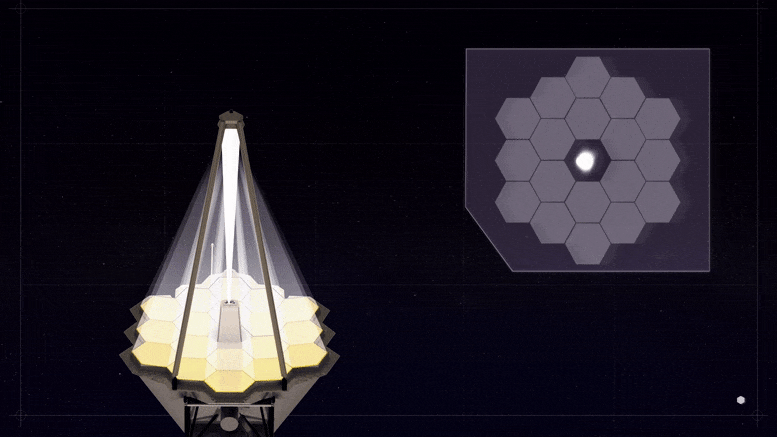Crédito: Centro de Vuelo Espacial Goddard de la NASA
Después de comenzar la alineación del espejo con la primera detección de luz estelar en la Web en la cámara de infrarrojo cercano (NIRCam), el equipo del telescopio está trabajando arduamente en los próximos pasos para alimentar el telescopio. Para seguir avanzando, el equipo necesita usar otro instrumento, el sensor de guía de precisión, para montarlo en una estrella guía y mantener el telescopio apuntando hacia arriba.[{» attribute=»»>accuracy. We have asked René Doyon and Nathalie Ouellette of the Université de Montréal to explain how Webb uses its Canadian instrument in this process.
“After being powered on January 28, 2022, and undergoing successful aliveness and functional tests, Webb’s Fine Guidance Sensor (FGS) has now successfully performed its very first guiding operation! Together with the Near-Infrared Imager and Slitless Spectrograph (NIRISS), the FGS is one of Canada’s contributions to the mission.
“To ensure Webb stays locked on its celestial targets, the FGS measures the exact position of a guide star in its field of view 16 times per second and sends adjustments to the telescope’s fine steering mirror about three times per second. In addition to its speed, the FGS also needs to be incredibly precise. The degree of precision with which it can detect changes in the pointing to a celestial object is the equivalent of a person in New York City being able to see the eye motion of someone blinking at the Canadian border 500 kilometers (311 miles) away!
“Webb’s 18 primary mirror segments are not yet aligned, so each star appears as 18 duplicate images. On February 13, FGS successfully locked onto and tracked one of these star images for the first time. The FGS team was thrilled to see this ‘closed loop guiding’ working! From now on, most of the alignment process of the telescope mirrors will take place with FGS guiding, while NIRCam images provide the diagnostic information for mirror adjustments.”
– René Doyon, principal investigator for FGS/NIRISS, Université de Montréal; and Nathalie Ouellette, Webb outreach scientist, Université de Montréal
escrito por:
- Jonathan Gardner, científico jefe adjunto del Proyecto Web, NASACentro de vuelo espacial Goddard
- y Alexandra Lockwood, Científica del Proyecto de Comunicaciones Científicas Webb, Instituto de Ciencias del Telescopio Espacial

«Viajar ninja. Alborotador. Erudito del tocino. Experto en alcohol extremo. Defensor de los zombis».







More Stories
Los legionarios realizan dos cruceros separados vinculados a esta característica especial de lujo: informe
La supernova vista por primera vez en 1181 libera filamentos brillantes
SpaceX lanza 20 satélites de Internet Starlink desde California el 30 de octubre